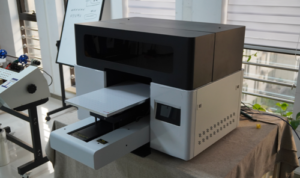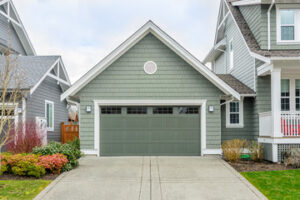Backlinking is one of the most critical components to SEO. It shows search engines that your content is relevant and trustworthy, which leads to higher rankings.

Getting backlinks isn’t easy, though. There’s a lot of jargon that’s thrown around that can confuse people. Luckily, there are many ways to get backlinks that’ll work. Visit https://www.crescentcitymarketing.com/ to learn more.
Creating content that’s easy to link to is fundamental to SEO. In addition to helping SEO, this kind of content can bring in traffic and position your brand as a thought leader in your industry. It can also be used to generate leads, which is essential for growing your SaaS business.
A backlink is a link that points to your website from another website. While there are many different kinds of backlinks, the most important ones are the relevant and natural kind that occur when another website links to your content. They should also come from websites that are in the same niche as yours.
If you have too many irrelevant or low-quality backlinks, you could be penalized by search engines like Google. This is because the algorithms that determine a page’s rank take into account the relevance of the referring pages and the topic of your site. It’s easier for the algorithm to understand the relationship between a site that focuses on eco-friendly gardening and another that focuses on endangered hedgehogs, than it is to understand the connection between an online shoe store and a site devoted to vintage pencil sharpeners.
In order to ensure that your content is easily linkable, you should focus on producing high-quality and valuable assets. This includes blog posts, infographics, and other pieces of content that can be shared on social media and other websites. When creating these types of assets, remember that they aren’t meant to be a short-term marketing tactic. Instead, they should be part of a long-term strategy that’s designed to increase your organic reach and drive more qualified website traffic.
Creating this type of content can be challenging, but there are several tools that you can use to help you get started. For example, tools like Moz and SEMrush can help you identify relevant backlink opportunities, as well as analyze your current backlinks. Using these tools, you can see which of your pages are ranking well on SERPs and which ones need more work. You can then use this information to create a content plan for the future.
Partnering With Larger Brands
Having backlinks from larger brands in your industry is an indication that you’re trusted and valuable. It’s also a way for your company to gain visibility across the internet and introduce your content to a new audience. In addition to increasing your online exposure, this broader reach can help you attract and convert more leads.
In order to improve your credibility and trustworthiness, you need a backlink profile that is diverse and natural-looking. This includes a variety of link types and anchor text (the clickable text in a hyperlink). It’s important to monitor your backlink profile to ensure that the majority of links are dofollow. Nofollow links do not transfer SEO credit to your website, but they can still bring in traffic and boost your search engine visibility. It’s also a good idea to have a healthy mix of dofollow and nofollow links in your backlink profile.
One of the most effective ways to get high-quality backlinks is by partnering with other websites and influencers in your industry. This often involves guest blogging or collaborating on an informative article with another website. This not only increases your visibility and brand recognition, but can also lead to potential business opportunities or collaborations in the future.
When partnering with others to acquire backlinks, it’s important that you’re using ethical techniques. Pay-to-play backlinking schemes have a long history on the web and can be extremely damaging to your site’s reputation and ranking. In some cases, these spammy practices can even result in a Google penalty. Fortunately, there are tools like SEMRush that can help you spot these harmful links and take action accordingly. These tools will scan your backlink profile for signs of bad links, including paid inbound links and low-quality links that originate from spammy or porn sites. Using these tools regularly will keep your backlink profile healthy and prevent any penalties from occurring.
Finding Broken Links
Broken links are a common problem that can affect the user experience of your website and cause SEO efforts to suffer. They happen when a link leads to an error page on your site, usually a 404 or 500 error. These errors are frustrating for human users, but also can cause search engines to lose faith in your website. In order to avoid these issues, it’s important to find and fix broken links regularly.
There are several ways to do this. One way is to use a tool like Ahrefs’s Site Explorer, which will show you a list of all the links on your site that are broken. You can then take a look at the referring domain and target URL to understand which pages are affected. You can also apply filters to narrow down the list, such as filtering by the referring domain rank or by path.
Another way to find broken links is to use Google’s Search Console, which will help you monitor and troubleshoot your site. This tool will show you a list of your broken links, as well as instructions for fixing them.
Lastly, you can use a tool like ContentKing to automatically scan your site for broken links. This will save you time, as you won’t have to manually test every single link on your website. This will also help you stay on top of problems, so you can catch them before they cause a negative impact on your search engine rankings.
Using these strategies will ensure that your backlinks are working as intended and that your site is ranking well in search results. You can even improve the effectiveness of your backlinks by reaching out to the sites that are linking to you and asking them to update their links if they are no longer working. This will give you more control over the quality of your backlinks, so you can focus on creating high-quality content that is relevant to your target audience. By doing this, you’ll be able to get more traffic and increase your website’s overall visibility.
Creating 301 Redirects
Imagine that you moved to a new house and didn’t tell your postal service about the change. Every piece of mail you send to your old address would be returned to you or held at the post office until you called to let them know of your new address. That’s a lot like what can happen to a website when you forget to create a 301 redirect before changing the URL of a page or piece of content. A visitor who types in your old URL will see a “404 Not Found” error page, which will give them a bad experience and may discourage them from returning to your site.
Creating a 301 redirect map is essential for maintaining SEO value when changing the URL of any content on your site. The process can seem complex and time-consuming, but implementing an effective one ensures that your website’s SEO doesn’t take a hit and that visitors aren’t left frustrated by broken links.
To begin, you’ll need to crawl your existing website and make a note of all the URLs on each page that should be redirected to the new location. You can use your content management system’s tool or a third-party plugin for this. Once you have a list of all your URLs, it’s time to implement them using a 301 redirect map. You’ll also need to update any external links, bookmarks, and references to the old content to point to its new destination.
The main benefit of a 301 redirect is to inform search engines that the content has been permanently moved to a different URL. This lets them update their index quickly and ensures that users continue to find the content they’re looking for on your website.
Using a 301 redirect is also a good way to avoid duplicate content, which can be harmful to your SEO. For example, if you have a popular blog article that has been published in multiple places (such as on social media), you should redirect the original version to the most relevant version to reduce duplication.








